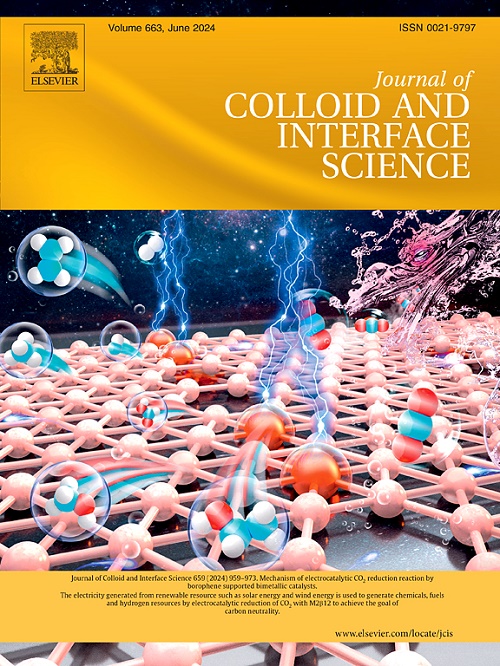Ultra-fast activated NH4+-intercalated vanadium oxide cathode for high-performance aqueous zinc-ion batteries
IF 9.7
1区 化学
Q1 CHEMISTRY, PHYSICAL
引用次数: 0
Abstract
Vanadium-based oxides hold immense promise as cathode materials for aqueous zinc-ion batteries (AZIBs); however, their practical implementation faces a significant hurdle: a prolonged activation period is typically required to achieve peak performance. This activation process, which often requires hundreds of cycles, arises from the complex behavior of mixed-valence vanadium systems. In this paper, we propose a solution based on an elegant and simple electrical activation strategy. By applying a carefully designed precycling charging protocol to NH4+-intercalated vanadium oxide (VON), we achieved activation speeds, reaching peak capacity within just several to 25 cycles—even under high current densities. The electrochemically activated material (E-VON) demonstrates performance metrics: delivering a high specific capacity of 359.1 mAh g−1 at 0.1 A g−1, maintaining a rate capability of 155.5 mAh g−1 at 10 A g−1, and showing cycling stability. The electrical activation process enhances ion transport within the VON structure and triggers a Zn2+/H+ coinsertion mechanism during cycling. This mechanism is intricately linked to the reversible formation and dissolution of a basic zinc sulfonate by-product, offering new insights into charge storage processes within vanadium-based AZIB cathodes. Our comprehensive characterization revealed how this activation strategy fundamentally transforms the structure and electrochemical behavior of materials, providing a practical pathway to overcome the longstanding limitations of traditional vanadium oxide cathodes. This study focuses on rapidly activating cathode materials, advancing the development of high-performance AZIBs.

高性能水锌离子电池用超快速活化NH4+插层氧化钒阴极。
钒基氧化物作为含水锌离子电池(azib)的正极材料具有巨大的前景;然而,它们的实际实现面临着一个重大障碍:通常需要较长的激活周期才能达到峰值性能。这种活化过程通常需要数百次循环,是由混合价钒体系的复杂行为引起的。在本文中,我们提出了一个基于优雅和简单的电激活策略的解决方案。通过将精心设计的预循环充电方案应用于NH4+插层氧化钒(VON),我们实现了激活速度,即使在高电流密度下,也可以在几到25个循环内达到峰值容量。电化学活化材料(E-VON)展示了性能指标:在0.1 a g-1时提供359.1 mAh g-1的高比容量,在10 a g-1时保持155.5 mAh g-1的倍率能力,并显示出循环稳定性。电激活过程增强了VON结构内的离子传输,并在循环过程中触发了Zn2+/H+共插入机制。这种机制与碱式磺酸锌副产物的可逆形成和溶解有着复杂的联系,为钒基AZIB阴极内的电荷存储过程提供了新的见解。我们的综合表征揭示了这种激活策略如何从根本上改变材料的结构和电化学行为,为克服传统氧化钒阴极的长期局限性提供了一条实用的途径。本研究的重点是快速激活正极材料,推动高性能azib的发展。
本文章由计算机程序翻译,如有差异,请以英文原文为准。
求助全文
约1分钟内获得全文
求助全文
来源期刊
CiteScore
16.10
自引率
7.10%
发文量
2568
审稿时长
2 months
期刊介绍:
The Journal of Colloid and Interface Science publishes original research findings on the fundamental principles of colloid and interface science, as well as innovative applications in various fields. The criteria for publication include impact, quality, novelty, and originality.
Emphasis:
The journal emphasizes fundamental scientific innovation within the following categories:
A.Colloidal Materials and Nanomaterials
B.Soft Colloidal and Self-Assembly Systems
C.Adsorption, Catalysis, and Electrochemistry
D.Interfacial Processes, Capillarity, and Wetting
E.Biomaterials and Nanomedicine
F.Energy Conversion and Storage, and Environmental Technologies
文献相关原料
公司名称
产品信息
阿拉丁
Zinc trifluoromethanesulfonate
阿拉丁
1-Methyl-2-pyrrolidinone

 求助内容:
求助内容: 应助结果提醒方式:
应助结果提醒方式:


